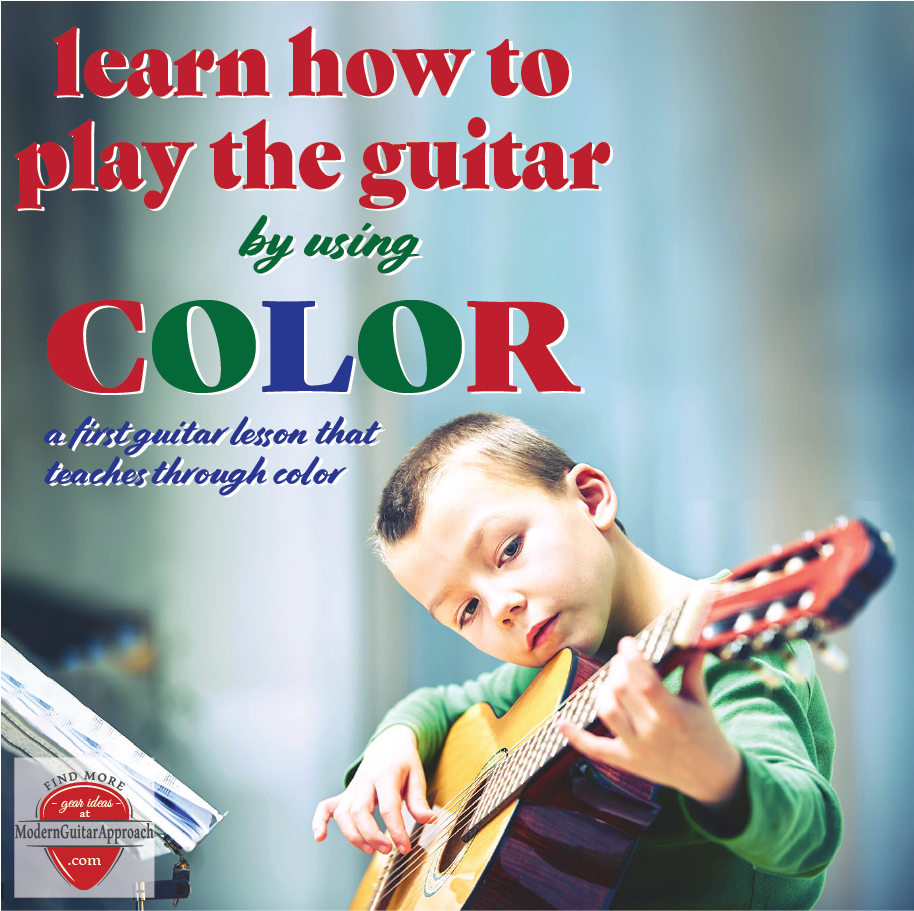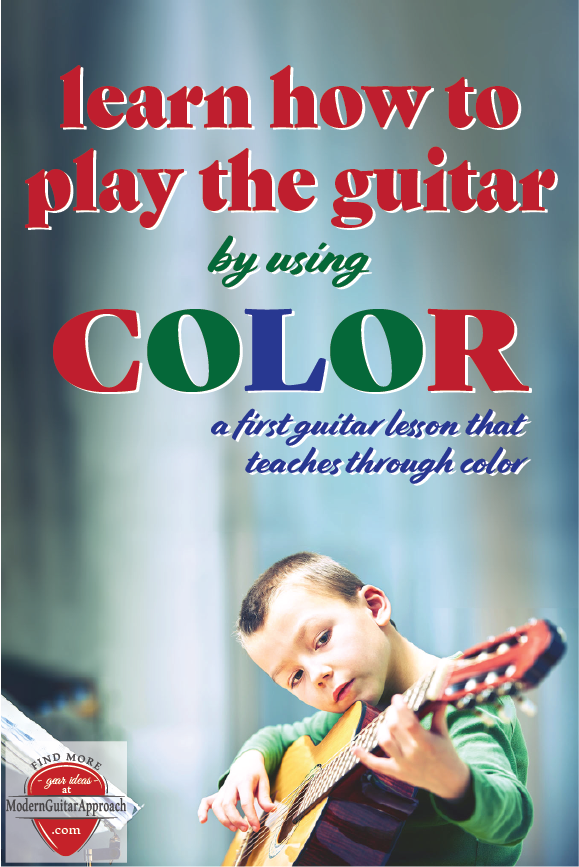Learning how to play the guitar by color is an effective way to teach ANY beginner guitar student, regardless of age. If you have never played the guitar before, this first guitar lesson is for you!
As guitar teacher, I have created a few of my own sheets that use the color concept to give to all of my beginning guitar students. If my student hasn’t played the guitar before, this is definitely the easiest and most effective way to get started. In this lesson, you will learn all about finger numbers, string numbers and fret numbers. You will also start playing on the first three strings and learn several songs!
When I teach a new guitar student, I’m also sure to add in some chord songs as well from the beginning. In a first lesson, you can easily learn how to play the first string (below) and the song Brother John from my lesson; The First Seven Songs I Teach All of My Beginning Guitar Students.
Numbers, Numbers, Numbers
So, what do you need to know to start playing the guitar? You need to know 3 different sets of numbers:
- Left Hand Finger Numbers
- String Numbers
- Fret Numbers
Finger Numbers
The numbers on your left hand (assuming that you are right handed) don’t include the thumb. Instead, the thumb is placed on the middle of the back of the guitar neck and the fingers are used to push down on the strings.
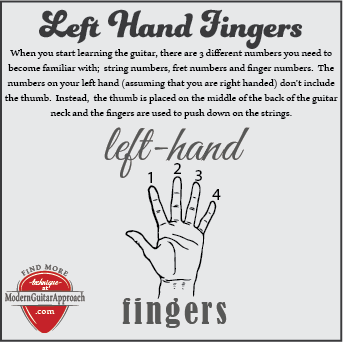
Thumb Placement
Notice in the photo below how this boys thumb is on the middle of the back of the neck. Be sure not to wrap your thumb all the way around the guitar neck and use it to hold onto your guitar! New guitar players do this all of the time as a way to hold the guitar in place. Instead, use a guitar strap and a footstool to help hold your guitar in place.
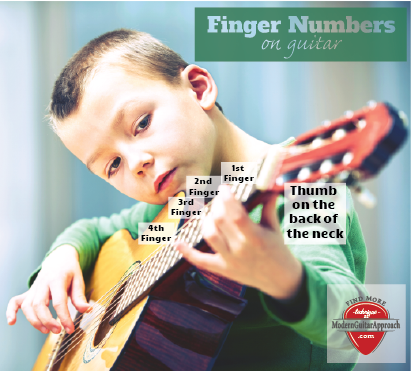
Fret Numbers
The numbers on your frets start with 1 and go up to 14 or even as high as 27 (depending on the type of guitar you have). The nut is considered open. Here is a graphic of the first 4 frets.
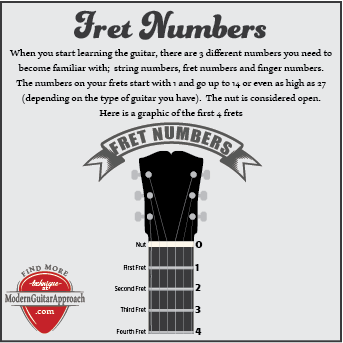
Proper Finger Placement
When you first start playing the guitar, get in the habit of always playing the first fret with the first finger, the second fret with the second finger and so on. Most new players are unsure about WHERE and HOW to place their finger properly. When placing a left-hand finger on the string, “square” the finger and push on the string using the tip of the finger. Be sure that your fingernails are cut as short as possible so you can do this correctly. There is a “sweet spot” for finger placement. This is just behind the fret (closer to the head of the guitar). You can even touch the fret, just don’t put your finger right on top of it. If your finger is too far away from the fret, it is harder to get a sound at all and that sound will be more likely to buzz.
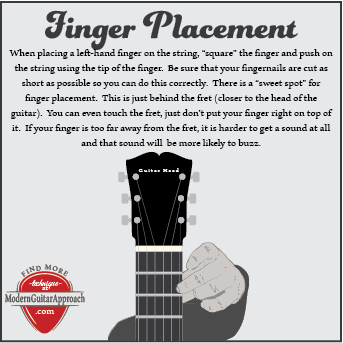
String Numbers
The first string is the smallest and highest sounding string. It is also the one that is closest to the floor when you are holding the guitar. The 6th string is the thickest and lowest sounding.

Here is an image of someone holding the guitar so you can see how the first string is closest to the ground.
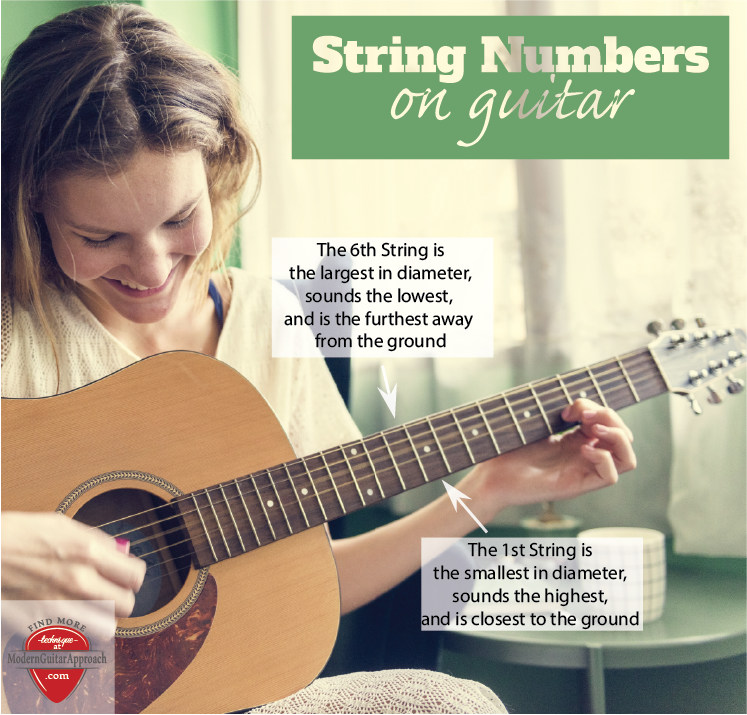
Learning By Color
Learning by color isn’t just for kids! Learning by color is an effective way to teach ANY beginner guitar student, regardless of age. I have created a few of my own sheets that use the color concept to give to all of my beginning guitar students. If my student hasn’t played the guitar before, this is definitely the easiest and most effective way to start. Once they’ve worked through these sheets, I move on to tablature and reading notes.
Let’s Get Playing! – First String
The first exercise you’ll do is on the first string. Just to make sure you’re sure which string that is, here is a graphic to help:
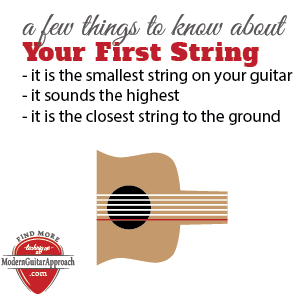
Red is the color associated with the 1st string. Any time you see a red number, it indicates both the finger and the fret to use while playing the first string. If the number is 0 (zero), just play the first string open. This means don’t press down with your fingers at all. Use your thumb or a finger on your right hand to play the first string (one thing at a time, right? At this point, we’re not really addressing how to use the right hand).
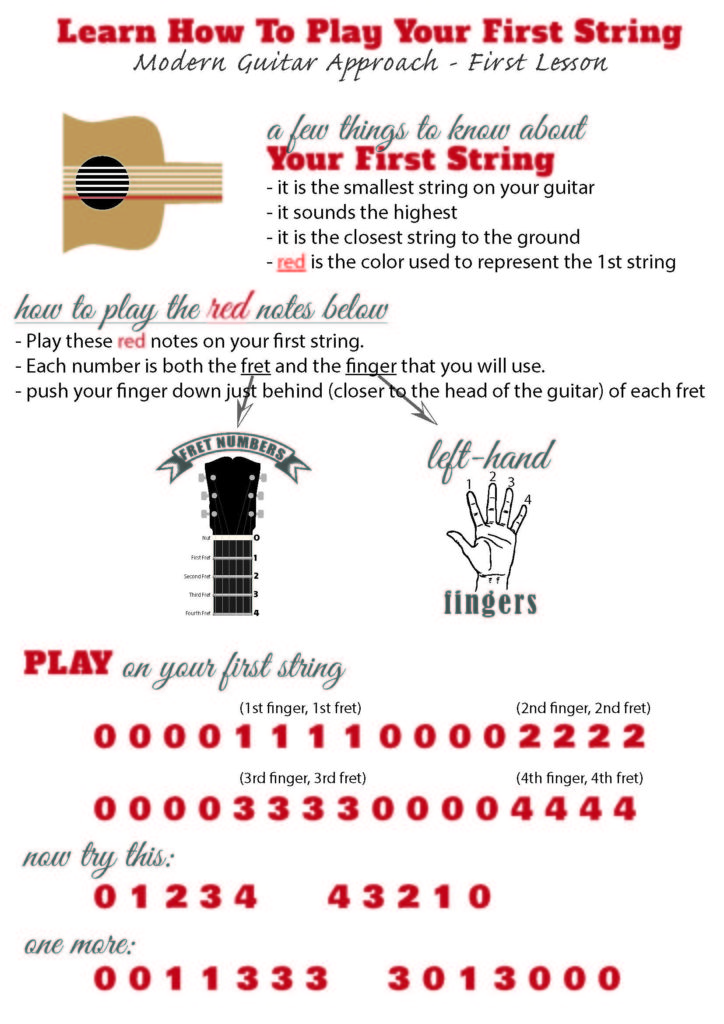
Adding on the 2nd String
Blue is the color associated with the 2nd string. Any time you see a blue number, it indicates both the finger and the fret to use while playing the second string. I created the music below to get students playing the second string and then combining it with the first.
Are you wanting to learn how to play the guitar, but you aren’t sure what gear you need? If so, check out my post – Guitar Gear For The Beginning Guitarist!
Third String
The third string is identified with the green color. The page below does the following:
- Introduces the third string
- Teaches Ode to Joy – a song that connects the third and second strings
- Gives a great warm up for all three strings
- Teaches Happy Birthday – a song that connects all three strings

That’s it! Now it’s time to move on to learning tablature and how to read standard notation. There will be a post on easy tablature coming soon. Also, don’t forget to add in songs. I teach songs along with this concept so my students can also learn to strum and sing. Be sure to check out The First Seven Songs The I Teach All Of My Guitar Students and Easy Songs Using G, C & D7.
Images for Social Media
